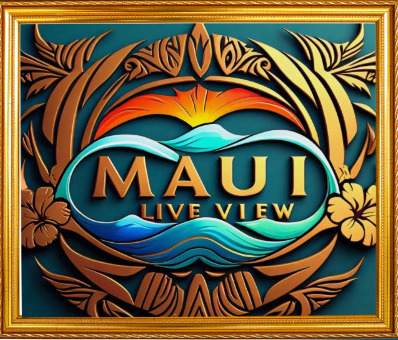Hana, Maui Webcams
Hana FAA Webcam
The Timeless Charm of Hana: A History of Maui’s Jewel
Hana, Maui Webcams. Hana, located on the eastern coast of Maui, is a secluded and picturesque town known for its lush tropical landscapes, tranquil beaches, and rich cultural history. Its remote location and rugged beauty have long made it a hidden gem, accessible via the famously winding and scenic Hana Highway. The story of Hana spans centuries, weaving together Hawaiian traditions, natural wonders, and the legacy of its people.
Ancient Times: The Birth of Hana
Long before European explorers arrived, Hana was home to Native Hawaiians who thrived on the island’s fertile land and bountiful ocean. In Hawaiian, “Hana” means “work,” a name that reflects the labor-intensive agriculture that sustained the community. Early settlers cultivated taro, a staple crop, using ingenious irrigation systems called “auwai.” These systems allowed them to grow taro in terraced ponds, ensuring a steady food supply.
Hana’s location also made it a spiritual and strategic center. It was said to be the site of numerous heiau (sacred temples), including Pi’ilanihale Heiau, one of Hawaii’s largest and most significant temple complexes. Built between the 13th and 15th centuries, Pi’ilanihale Heiau was dedicated to the god Lono, associated with agriculture and fertility. The heiau remains a testament to the architectural and cultural achievements of ancient Hawaiians.
The Reign of Pi’ilani and the Rise of a Kingdom
Hana played a pivotal role in the unification of Maui under the rule of King Pi’ilani in the 16th century. Pi’ilani was a renowned chief who brought peace and prosperity to Maui, consolidating the island’s districts and constructing an extensive network of trails that connected villages. His reign marked a golden age for Hana, as the town became a hub of commerce, culture, and governance.
After Pi’ilani’s death, his son Kiha-a-Pi’ilani continued his legacy but faced challenges from rival chiefs. Hana became a battleground, and its strategic importance grew. Despite the turmoil, the region remained a vital cultural and agricultural center.
European Contact and the Changes of the 18th Century
The arrival of European explorers in the late 18th century brought significant changes to Hana and the Hawaiian Islands. In 1778, Captain James Cook’s arrival marked the beginning of increased contact between Hawaiians and Europeans. Trade and the introduction of new goods and technologies altered traditional ways of life.
In the early 19th century, Christian missionaries arrived in Hana, bringing new religious practices and influencing Hawaiian culture. The missionaries established schools and churches, some of which still stand today as historical landmarks. While the missionaries aimed to “civilize” the population, their presence also led to the loss of many traditional Hawaiian practices and beliefs.
The Plantation Era: Sugarcane and Transformation
The 19th and early 20th centuries saw Hana transformed by the rise of the sugarcane industry. Plantations were established throughout Maui, and Hana became a key site for sugar production. Immigrant laborers from countries such as China, Japan, Portugal, and the Philippines arrived to work on the plantations, creating a diverse and multicultural community.
Hana Sugar Plantation, established in the late 1800s, played a significant role in the town’s economy. The plantation brought jobs and infrastructure but also altered the natural landscape. Sugarcane fields replaced native forests, and the labor-intensive work demanded long hours and strenuous effort from workers.
The plantation era also brought innovations, such as the construction of a wharf to transport sugar and other goods. Despite these advancements, Hana’s remote location made it less accessible than other parts of Maui, preserving its untouched beauty.
Decline and Renaissance: The 20th Century and Beyond
By the mid-20th century, the sugar industry in Hana began to decline, leading to economic challenges for the community. However, this decline also marked the beginning of Hana’s transformation into a tourist destination. In the 1920s, the Hana Highway was constructed, connecting the town to the rest of Maui. The highway, with its 620 curves and 59 bridges, became an attraction in itself, drawing visitors eager to experience Hana’s natural beauty.
In the latter half of the 20th century, efforts to preserve Hana’s cultural and natural heritage gained momentum. The Hana Ranch was established, promoting sustainable agriculture and conservation. The town also became a retreat for artists, writers, and celebrities seeking solace and inspiration.
Today, Hana remains a small and close-knit community that values its history and traditions. The town is home to numerous cultural festivals, such as the Aloha Week Celebration, which honors Hawaiian music, dance, and crafts. Sites like Wai’anapanapa State Park, with its black sand beaches, and the Seven Sacred Pools of Ohe’o Gulch continue to enchant visitors.
A Living Legacy
Hana’s history is a tapestry of triumphs and challenges, shaped by the land and the people who call it home. From its ancient roots as a thriving Hawaiian settlement to its modern identity as a haven for nature lovers and cultural enthusiasts, Hana embodies the spirit of aloha. It is a place where the past and present coexist, inviting all who visit to connect with its timeless charm and enduring legacy.
For more information, visit the official Maui County, Hawaii website.
Hana, Maui Webcams
See Maui live beach cams here.
